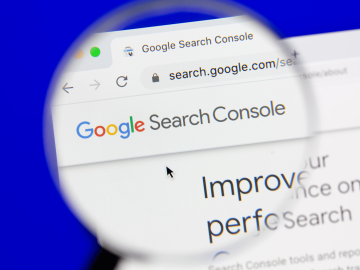Let’s delve into the nuts and bolts of creating a winning SEO strategy.
Perform a Site Audit on SEO
The first thing that you need to do is to perform a site audit. A site audit serves as a road map of what to do as it tells you what to work on and helps you determine KPIs critical to success. A site audit will look at many different aspects of the website.
The first thing it does is look at the site name, age and history. Older sites with good practices are in better initial shape than a new site or one that hasn’t adhered to the best practices of developing content.
The site audit will also take a look at page factors. Page factors include things such as headlines, user engagement and general keyword targeting. Websites with clear headlines that focus on keywords and have good user engagement are poised for success.
The content itself is then reviewed. The audit looks at how content is organized in sitemaps and whether or not the content is meeting the needs of readers. A review of content also looks at images used in the content. Stock photography can be detrimental to the goals of the SEO content campaign if they are used on many sites around the web. Images should also be optimized properly for quick loading. Auditors are also looking for duplicate content, which is not good for SEO strategies.
The audit also looks at website architecture. The site should be easy to navigate and find usable content. It also considers technical aspects such as schema and markup. The audit will also want to see the current click-through rate (CTR).
In the audit, the quality of inbound links will be considered. A list of spam links will be made so that you can disavow these links. You want quality external inbound links that give your website credibility. You don’t want the search engines to see you as a spam site.
Start Keyword Research
Keywords can be a single word or a phrase that describes what a searcher is looking for. Keywords inform the search engine as to what your content is about. It needs to address search intent, be relevant and have search volume. Volume is how many times in a month searchers are looking that word or phrase up in a search engine query.
Search intent refers to the intent that the reader has when performing a search. Are they looking for advice? Do they want to buy? Search intent is very important in driving traffic to websites. For example, someone with the search intent of buying car insurance might enter in the term “cheap car insurance.” By understanding the intent, you can create content that matches the need. In this case, a roundup of the best cheap car insurance providers might be something the searcher clicks on to learn more.
Search volume tells you how relevant the term is, and if it is being inquired about a lot. While you may write content for keywords that don’t have a lot of volume, you likely will also target high-volume keywords that are very relevant.
You want your search terms to relate to each other and limit the number of topics that your site addresses. For example, a website about bicycles might explore keywords pertaining to road bicycles and mountain bikes. It would be off-topic to have content about skateboarding too. You want to stay on-topic so that the search engines see you as an expert on the topic.
Establish MVP Pages
Similar to a most valuable player, your website needs most valuable pages (MVPs). These are pages that target the highest-volume keywords and are central landing pages for readers to go to. To identify these pages, think about what your company is known for—or what you want to be known for. A good example of an MVP in SEO content would be category pages on an e-commerce website. Category pages give an overview of the products featured in that category. This type of landing page is better suited for a searcher than an actual product page. They’ll start at the category page and work their way to more specifics if interested.
When you can increase traffic to these MVPs, you’ll be capturing leads of searchers specifically looking to solve certain problems that you address. These pages become the hub for readers to start at and then branch out on your site to more specific solutions.
Perform a Competitive Analysis
It’s important to know what other websites are doing in the topic space your website lives in. Competitors are other websites looking to rank for the same keywords you are targeting. Look at what they are doing and what is working for them. Once you see what is working in the search results, craft your content to be better than theirs so that the search engines see you as the best answer to people’s questions.
Look at the most competitive keywords for your industry and see what content ranks for it. Check out their backlinks to see where they’ve gotten a nod for creating useful content. The more you understand about your competitors, the better able you will be to create a plan that outranks them and beats them at this SEO game.
Think About UX
Your user experience (UX) will go a long way in determining your SEO success. Good content is content that users stay on for a while without going back to SERPs to look for better content. As said previously, your site should be easy to navigate so that once someone is on your site, they can click through to various pages and find the content they are looking for.
A lot of the UX is determined by the site’s architecture. You want a sitemap that makes sense, giving people a hierarchy of content. The broadest content might be informational and as they click through to other content, it becomes more sales oriented, helping them pick a solution to their problem. You don’t want people confused on your website. This means they will likely leave the website quickly and the search engine will not rank you as high.





